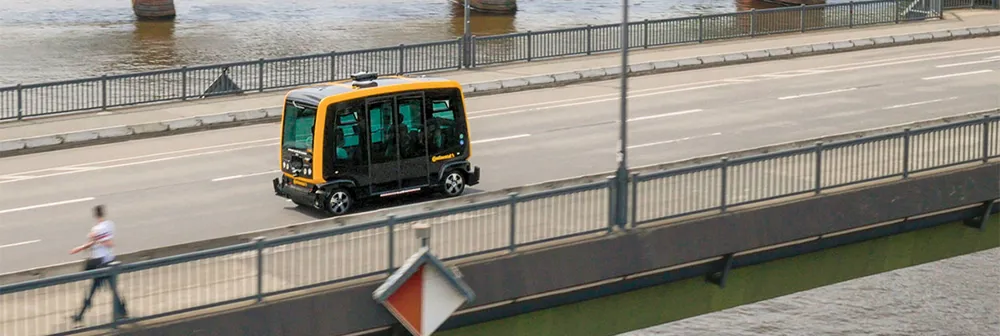The New Mobility: Redefining the Auto Industry
June 2, 2019
- Author: Robert E. Calem


May/June 2019
More articles in this issue:
Nissan presented a version of this at CES. The automaker’s Seamless Autonomous Mobility or SAM system combined artificial intelligence (AI) with V2X, prompting a self-driving car to safely stop and contact a human teleoperator, whom the automaker called a “mobility manager.” Nissan says a self-driving car may be confused by a police officer using hand signals to direct it across double yellow lines and into the path of oncoming traffic. In this case, the mobility manager could access the vehicle’s sensors (LIDAR, cameras and radars) to remotely assess the situation, send the vehicle a path to follow, and command the vehicle to continue in self-driving mode when the police officer gestures it to go.
A new company named Designated Driver, based in Portland, OR, has a different take. The company’s technology enables both the sort of “indirect” assistance described by Nissan and “direct” control, in which the teleoperator remotely drives the vehicle for a short distance himself. The technology exists for a teleoperator to drive a vehicle for a few minutes at speeds up to 20 miles per hour, says Designated Driver’s CEO Manuela Papadopol.
Because latency of the communications network may be a concern for teleoperation, Papadopol says, Designated Driver’s system functions on 4G and 5G networks, and it informs the teleoperator exactly how quickly the vehicle’s data is traversing the cloud. “If [the latency is] higher than
100 milliseconds, we don’t advise teleoperation,” she says. “Then you go into that fail-safe mode, where the car is brought to a safe stop on the side of the road.”
Also distinguishing Designated Driver is the HMI (human machine interface) that its teleoperators use, Papadopol says. Because the teleoperator’s training and actual work are extremely strenuous, it’s crucial that the remote environment closely mimics a car’s cabin — even having an ordinary instrument cluster and a normal driver’s seat. “It cannot be an office chair or a bar stool,” she says.
The auto industry will continue to transform as its connections with people and objects improve.
Join our community of innovators and shape the future of technology.



